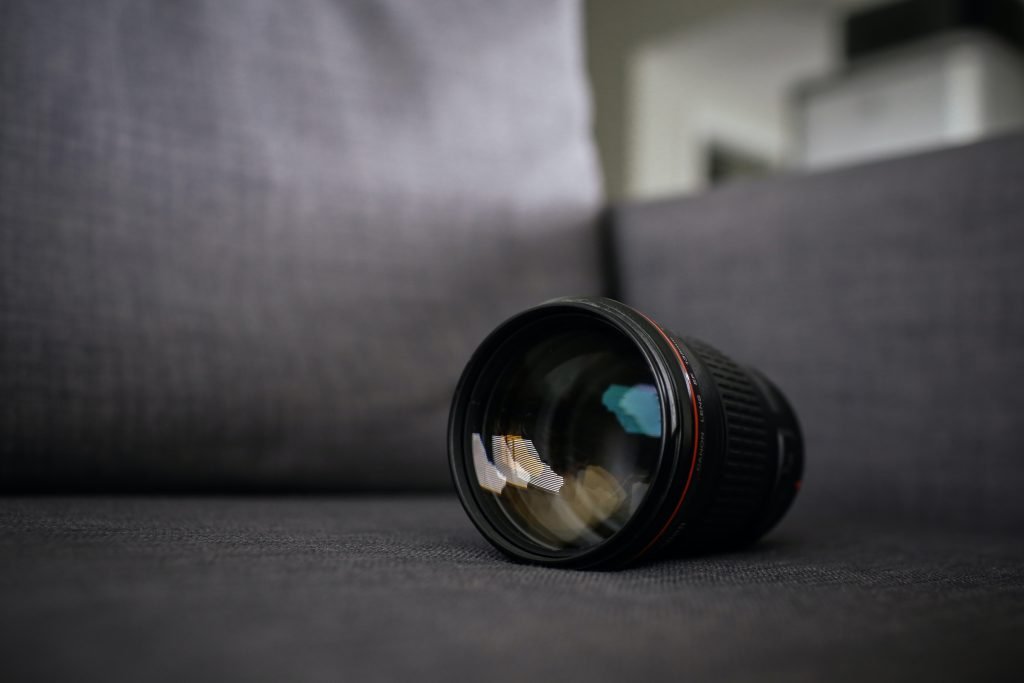Last updated on January 16th, 2024
Have you ever wondered why are camera lenses so expensive? You might have just bought a new camera, only to find that you must invest in expensive lenses to achieve your desired results. The cost of camera lenses can be quite a shock, especially when compared to the price of the camera body.

In this blog post, we will explore why lenses are so expensive and whether they are worth the investment.
The Cost of Research and Development
One of the main reasons camera lenses are so expensive is the research and development (R&D) that goes into their creation. Optical design, creating a lens with specific characteristics, is a complex and time-consuming endeavor. Manufacturers like Nikon invest heavily in R&D to develop advanced optical designs and coatings for their lenses, ensuring optimal performance across focal lengths, apertures, and zoom ranges.
Quality of Materials and Manufacturing Process
Camera lenses are made from high-quality raw materials, such as optical glass, which adds to the cost. Manufacturing lenses requires precision machinery and skilled labor, making the manufacturing process both expensive and time-consuming. Lenses like the Nikon AF-S Nikkor, designed for Nikon full-frame DSLR cameras, have numerous glass elements within the lens body. The use of high-quality materials and the meticulous manufacturing process ensures better image quality, durability, and weather sealing – all factors contributing to camera lens costs.

Expensive Components in Professional Lenses
You’ll notice a significant price difference when comparing consumer-grade lenses to professional-grade lenses. Professional lenses often have more advanced optical designs and coatings and more durable and weather-sealed construction. They also have larger maximum apertures, allowing for better low-light performance and more creative control over the depth of field. These features require higher-quality materials and more complex manufacturing techniques, increasing the cost of professional lenses.
The Camera System and Compatibility
Another factor contributing to the cost of camera lenses is the camera system they are designed for. Lenses for professional camera systems are typically more expensive than those for consumer systems. This is because professional systems demand higher performance and more advanced features. Additionally, lenses are often designed to be compatible with multiple camera bodies, ensuring that the investment in a high-quality lens can be utilized across various camera models.
Are Expensive Camera Lenses Worth the Investment?
Now that we understand why camera lenses are so expensive, the question remains: are they worth the investment? For professional photographers, the answer is a resounding yes.
High-quality lenses deliver superior image quality and are often built to withstand harsh conditions, making them indispensable for serious photography work.
For hobbyists or those just getting into photography, expensive lenses might be optional after some time. Many consumer-grade lenses offer decent performance at an affordable price, and there are even some hidden gems that can provide better alternatives at a much lower price. As your skills and interest in photography grow, you can gradually invest in more advanced lenses to improve your image quality and expand your creative options.

How to Get Cheap Camera Lenses
So, let’s say you just got a camera and think you are done with the “expensive part.” Even if you cannot afford expensive lenses right away, there are some ways to get cheap camera lenses without sacrificing quality:
- Buy used lenses: Many photographers upgrade their gear regularly, meaning plenty of second-hand lenses are available at lower prices. Check online marketplaces, camera shops, or local photography clubs for used lenses.
- Consider third-party lenses: Brands like Sigma, Tamron, and Tokina offer lenses compatible with popular camera systems. These lenses often perform similarly to their brand-name counterparts but at a more affordable price.
- Take advantage of sales and discounts: Keep an eye on seasonal sales, promotional offers, and bundle deals from retailers and manufacturers. You can often find significant discounts on camera lenses during these events, making it easier to acquire the lenses you need at a more affordable price.
- Rent lenses: If you only need a specific lens for a short period or want to try it out before making a purchase, renting might be a good option. Many camera shops and online rental services offer lenses at a fraction of their retail price, allowing you to access high-quality gear without breaking the bank.
- Invest in older or manual-focus lenses: Modern cameras often have excellent focus assist features, which make manual-focus lenses a viable option for many photographers. Older lenses can often be found at a lower price. While they may not have the latest features, they can still deliver excellent image quality.

Understanding Lens Specifications
When shopping for lenses, it’s essential to understand the various specifications and features. Here are some key terms to help you make an informed decision:
- Focal length: The focal length of a lens, measured in millimeters (mm), determines the field of view captured by the lens. A shorter focal length (e.g., 18mm) provides a wide-angle view. In contrast, a longer focal length (e.g., 200mm) offers a narrower telephoto view.
- Aperture: The aperture is the opening in the lens that allows light to enter the camera. It’s represented by an f-number (e.g., f/2.8), with lower f-numbers indicating a larger aperture (more light) and higher f-numbers representing a smaller aperture (less light). A larger aperture allows for better low-light performance and a shallower depth of field.
- Image stabilization: Many lenses feature built-in image stabilization (IS) to help counteract camera shake, resulting in sharper images. This feature is handy for longer focal lengths and low-light situations.
- Autofocus motor: The autofocus (AF) motor determines the speed and noise level of the lens’s autofocus system. Some lenses have faster, quieter AF motors (e.g., Canon’s USM or Nikon’s SWM), ideal for shooting action or video.
Lens Categories
Camera lenses come in various categories based on their focal lengths and intended uses. Understanding these categories will help you choose the right lens for your needs:
- Prime lenses: These lenses have a fixed focal length, meaning you cannot zoom in or out. Prime lenses typically offer better image quality, larger apertures, and lighter weight than zoom lenses. Standard prime focal lengths include 35mm, 50mm, and 85mm.
- Zoom lenses: Zoom lenses allow you to change the focal length, offering greater versatility. They can cover a range of focal lengths (e.g., 24-70mm) and are ideal for travel or quickly switching between wide-angle and telephoto views.
- Wide-angle lenses: With short focal lengths (e.g., 14-35mm), they capture a broad field of view, making them perfect for landscapes, architecture, and interior photography.
- Telephoto lenses: Telephoto lenses have longer focal lengths (e.g., 70-200mm) and are ideal for capturing distant subjects, such as wildlife, sports, and portraiture.
- Macro lenses: Macro lenses are designed for close-up photography, offering high magnification and sharp detail for capturing small subjects like insects, flowers, and product photography.
Lens Care and Maintenance
Investing in high-quality lenses means you’ll want to protect and maintain them properly. Here are some tips to keep your lenses in top condition:
- Use lens caps and filters: Always use a lens cap when your lens is not in use to protect the front element from dust, dirt, and scratches. Additionally, consider using a UV or clear filter on the front of your lens for added protection without affecting image quality.
- Clean lenses gently: Use a soft, lint-free microfiber cloth to gently wipe away dust and fingerprints from the lens’s front and rear elements. Use a lens cleaning solution specifically designed for camera lenses for more stubborn spots.
- Store lenses in a dry, cool place: Humidity and extreme temperatures can damage your lenses over time. Store your lenses in a cool, dry place away from direct sunlight. A camera bag or case with padded compartments protects your lenses during storage and transport.
- Avoid sudden temperature changes: Rapid temperature changes can cause condensation inside your lens, leading to potential damage. When moving from a cold environment to a warmer one (or vice versa), allow your lenses to gradually acclimate to the new temperature before using them.
- Perform regular checks: Inspect your lenses for any signs of damage, fungus, or dust buildup. Addressing these issues early can help prevent more severe problems down the line.

Building Your Lens Collection
As you gain experience and develop your photography skills, you should consider expanding your lens collection to cover various focal lengths and types of photography. Here are some popular lens recommendations based on different photography genres:
- Landscape photography: Wide-angle lenses (e.g., 16-35mm) are famous for capturing sweeping vistas and dramatic skies.
- Portrait photography: Prime lenses with medium telephoto focal lengths (e.g., 85mm) and large apertures (e.g., f/1.8) are ideal for creating beautiful background blur and isolating your subject from the background.
- Wildlife and sports photography: Telephoto zoom lenses (e.g., 100-400mm) provide the reach needed to capture distant subjects without disturbing them or getting too close to the action.
- Street and travel photography: Versatile zoom lenses (e.g., 24-70mm) or compact prime lenses (e.g., 35mm) are excellent choices for capturing a wide range of subjects in varying lighting conditions.
- Macro photography: Macro lenses (e.g., 100mm) with a 1:1 magnification ratio allow you to capture intricate details in small subjects like flowers, insects, and jewelry.
While camera lenses can be expensive due to factors such as research and development, manufacturing processes, and quality of materials, they are often worth the investment. By understanding lens specifications, categories, and how to care for your lenses, you can make informed decisions about which lenses to purchase and how to maintain them for years.
Additionally, options for acquiring more affordable lenses, such as buying used lenses, considering third-party lenses, or renting lenses, allow you to continue honing your photography skills and expanding your creative possibilities without overspending.
FAQ
Do you really need expensive lenses?
While expensive lenses offer numerous advantages, such as superior image quality, durability, and more advanced features, you don’t necessarily need them, especially if you are a beginner or hobbyist photographer. Many consumer-grade lenses provide decent performance at an affordable price. They can help you develop your skills without the need for expensive gear.
What is the difference between cheap and expensive camera lenses?
The difference between cheap and expensive camera lenses primarily lies in their build quality, optical design, materials, features, and overall performance. Expensive lenses typically offer better build quality, more advanced optical designs, and higher-quality glass elements, resulting in improved image quality and reduced optical imperfections.
Additionally, they often have larger maximum apertures, faster and quieter autofocus systems, and more effective image stabilization, making them more versatile for various shooting situations. In contrast, cheaper lenses may have the lower build quality, simpler optical designs, and smaller apertures, impacting their durability, image quality, and performance in low-light or fast-paced scenarios.
Does lens quality really matter?
Lens quality matters, as it significantly influences the image quality and your photographic experience. High-quality lenses offer better sharpness, contrast, color rendition, and reduced optical imperfections such as chromatic aberration, distortion, and vignetting. These factors contribute to the creation of visually appealing and technically accurate images.
Moreover, better lenses often have improved build quality, faster and more accurate autofocus, and superior low-light performance, enhancing the overall shooting experience. While skill and creativity play crucial roles in capturing great photos, investing in a quality lens can help maximize your camera’s potential and elevate your photography to new levels.


